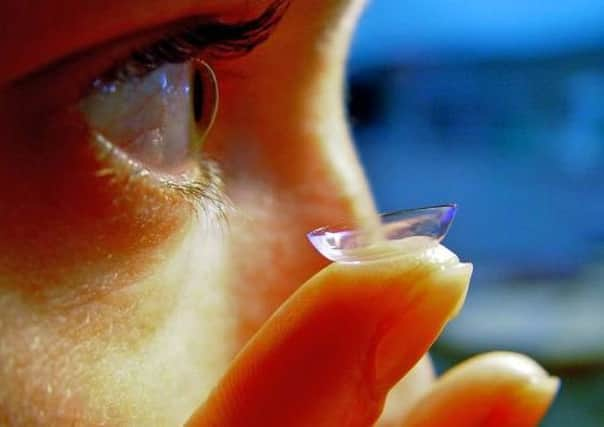Ilona Amos: Flushing contact lenses contributes to a global disaster


Litter clean-ups show this debris is landing on beaches and in our seas in increasing quantities, adding to the rising mountain of plastic pollution blighting the environment. Unflushables include wet wipes, cotton buds, sanitary products and nappies. But now a new problem has been identified: plastic-based contact lenses.
Over the past 10 years or so there has been a dramatic rise in the number of people using softer contact lenses, particularly the disposable versions. Around 4.2 million Britons wear lenses, resulting in sales of 780 million each year in the UK alone.
Advertisement
Hide AdAdvertisement
Hide AdThe latest figures from the Association of British Dispensing Opticians show 96 per cent of users opt for lenses that are used for just a day, a week or a month, then thrown away.
The numbers are even more staggering across the pond, where more than 45 million Americans use contact lenses. Now scientists in the United States have found that one in five of wearers will chuck old lenses down the sink or toilet when done with them.
The discarded discs usually wind up in wastewater treatment plants, where they are processed along with sewage. The researchers found contact lenses – which can be made from various types of plastic – were partially degraded during treatment, breaking down into smaller pieces. These can end up in the environment via water overflows or in sludge spread on agricultural land as fertiliser, where they pose a risk to wildlife – and potentially human health.
The likes of shellfish and filter feeders can eat microplastics, mistaking them for food. This can cause health problems or even death due to starvation. Microplastics can also pick up harmful chemicals and pass them on to anything they come into contact with.
You might not think a few bottom-dwellers matter much in the big scheme of things. But these creatures are at the bottom of a long food chain that has us at the top.
Recent tests on wild mussels – taken from eight coastal locations around the UK, including Scotland, and eight supermarkets – revealed 100 per cent had microplastics or other debris such as cotton and rayon inside them. Based on the findings, experts estimate diners will scoff around 70 pieces of debris in every 100 grams of mussels eaten.
And seafood is not the only route for plastic to turn up in people’s diets. Microplastics have been found in other food sources and in drinking water – even bottled.
Thanks to what is being dubbed the Blue Planet effect, we are finally beginning to wake up to the damage being caused by our addiction to plastic. And this new study, from Arizona State University, confirms that what we do in the smallest room in the house is increasingly coming back to haunt us – possibly on our dinner plates. Not a nice thought.
Advertisement
Hide AdAdvertisement
Hide AdPlastic-stemmed cotton buds and microbeads in cosmetics products are being banned to cut plastic pollution, but image-conscious myopics will be praying their disposable contact lenses don’t go the same way.
The answer is clear. We would do well to remember the mantra: only ever flush the three Ps. That’s ones, twos and (loo) paper.
